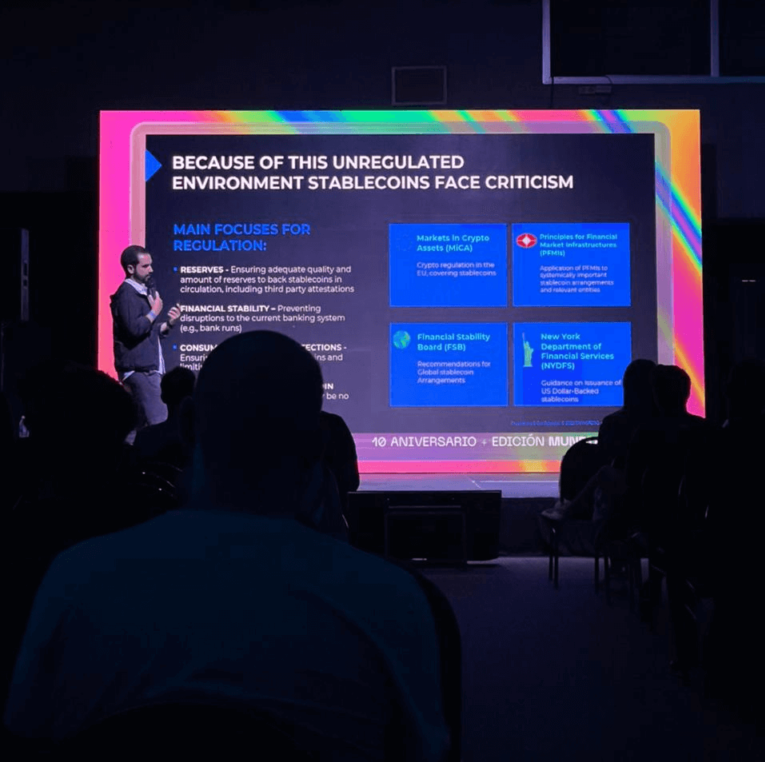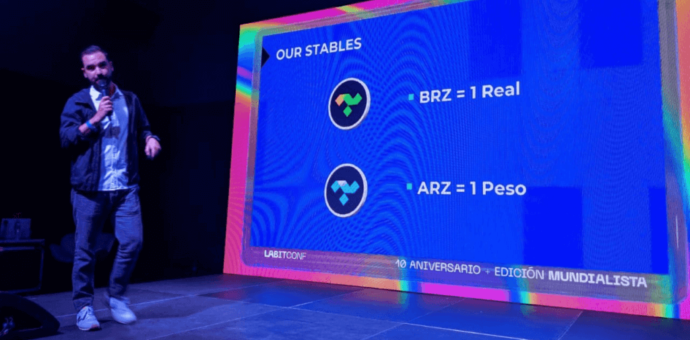Labitconf, one of the biggest crypto events in Latin America, took place last weekend in Buenos Aires, Argentina. Just as in the other editions, the event proved to be complete.
Of the various topics of the crypto world, none was left out: DeFi, CeFi, NFT, Metaverse, stablecoins, and the future of the market, all of these topics were covered throughout the three-day event.
Upon entering the complex, where three large sheds formed the event’s structure, one could soon see that there was something for all tastes and interests within the crypto market.
In the first hall, GameFi and community creation projects were on hand for those who wanted to connect.
At the same time, countless works of art were being created and, in real-time, bringing NFTs to life. On the last day, they were destroyed and auctioned, bringing the idea of a non-fungible digital art to a perfect end.
The companies had their stands distributed in about 5 thousand m2 of space in the next hall. That’s where the big businesses were taking place.
The main exchanges, payment institutions and web 3.0 solutions were connected in a maze of stands.
The long lines, the exchanges of corporate cards, and the raffles produced that characteristic sound of a place where everyone was looking for business opportunities. It was difficult to walk without being approached by someone asking: “Que haces tu compañía?”
In the middle of this hall was the Transfero stand, one of the sponsors of Labitconf 22, which attracted more and more people from countries with a complex and bureaucratic financial system, curious to understand Transfero’s services better.

They wanted to know, for example, how a stablecoin like the BRZ could help them in their business while enjoying the traditional Brazilian coffee served at the stand.
The last space of the complex was destined for the lectures, two of which counted with the participation of Transfero. Thiago Rüdiger, director of the company, discussed the opportunities that stablecoins offer for countries in Latin America.
On the other hand, I, Rodrigo Stallone, ministered a workshop to present more details about the current moment of stablecoins, addressing the regulatory scenario and the impetus of central banks worldwide for creating CBDCs.
In other panels, we also talked a lot about the crypto bear market, NFTs, DeFi, GameFi, regulation, and of course, FTX.
While some felt that paradigms were being broken, for others, new opportunities were arising.
This was the case in one of the most interesting panels at Labitconf 22, where executives from DeFi and CeFi projects debated the necessary controls so that what happened with FTX would not happen again.
With a sense of superiority, the DeFi protocols showed the moralism of “I told you so” in their speeches.
Meanwhile, CeFi project executives, a bit timider, reinforced the arrival of more active regulation and, consequently, the increasing volumes to be registered by institutional resources.
The interesting thing was to realize that despite the troubling moment of the last few weeks, there was no doubt that the crypto ship would continue sailing.
Impressions from Labitconf could not have been better. What about an event that Vitalik Buterin even attended?
Today, I can say that the event is a must stop for anyone who wants to see and understand what Latin America is doing about the crypto market. No doubt we will be back in 2023.







